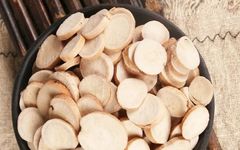The source is the dried root of the plant Paeonia lactiflora, belonging to the family Paeoniaceae.
Also known as Bo Shao and Hang Shao (in Bozhou, Bai Shao is referred to as “Hua Zi”).
Harvesting and processing occur in the summer and autumn. The roots are dug up, cleaned, and the heads, tails, and fine roots are removed. Bo Bai Shao is boiled in hot water to remove the outer skin, while Hang Bai Shao is peeled and then boiled, followed by drying.
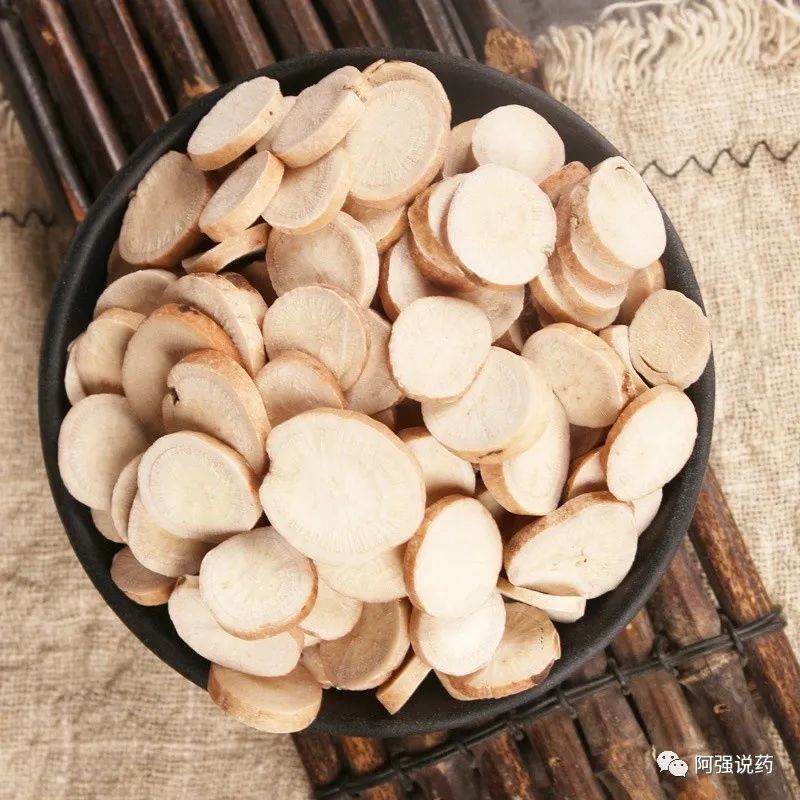
Identification
Bai Shao appears as near round or oval thin slices with a relatively flat cross-section. It is hard and brittle, not easily broken, with distinct annular and radial textures in the center.
Due to different processing methods, Bo Bai Shao has a light white outer skin, while Hang Bai Shao has a dark brown outer skin. The cross-section of Bo Bai Shao is light white, while Hang Bai Shao is reddish-brown.
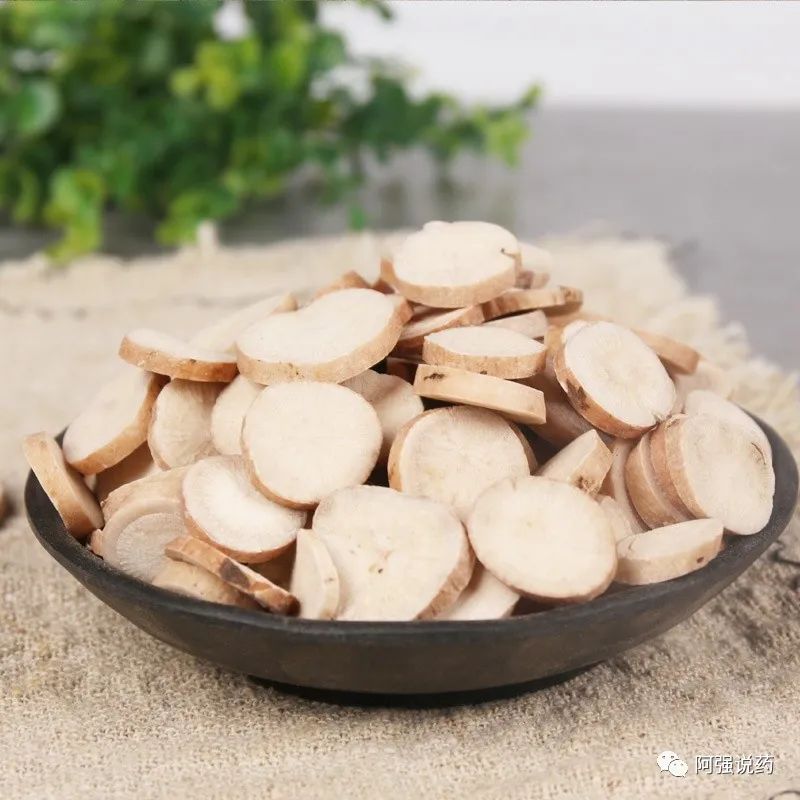
Properties and Taste Bitter and slightly sour, mildly cold, entering the Liver (Gan) and Spleen (Pi) meridians.
Efficacy
It nourishes the blood, astringes yin, benefits the liver, stops sweating, and alleviates pain.
It is suggested to use associative methods and efficacy.
Bai Shao and Chi Shao (Red Peony Root) are good sisters; Chi Shao has a lively effect of cooling the blood, while Bai Shao is more reserved, nourishing the blood and having a sour taste, which can enhance its efficacy of nourishing blood and astringing yin. The effects on the liver differ between Bai Shao and Chi Shao, with Bai Shao focusing on astringing to bring out its benefits. It benefits the liver, stops sweating, and alleviates pain.
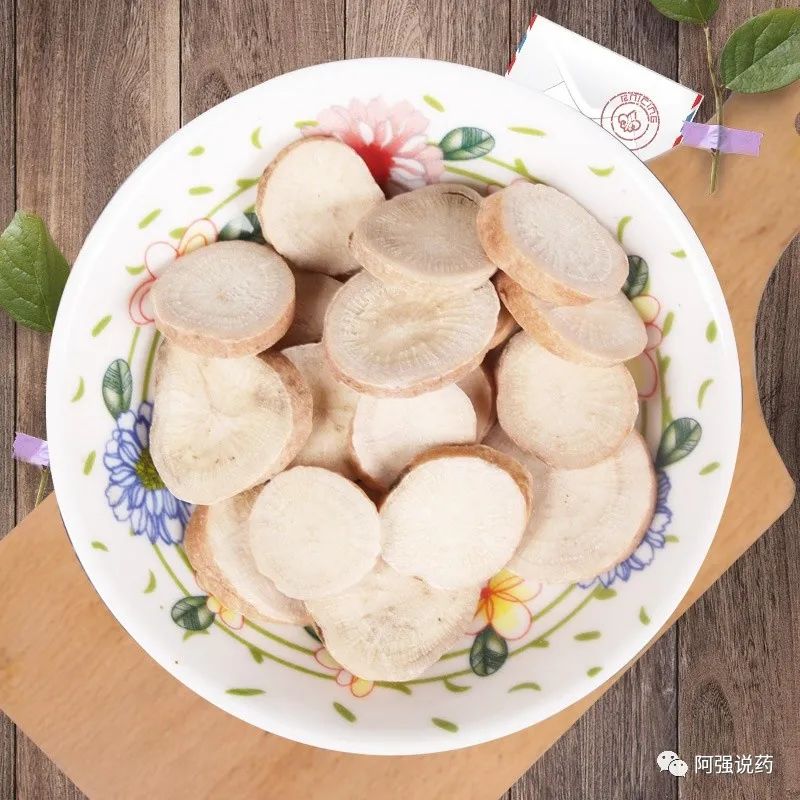
Precautions for Using Bai Shao
It should not be used with Li Lu (Rhizoma Veratri) and should be used cautiously in cases of deficiency-cold abdominal pain and cold stomach conditions. Avoid using with Shi Hu (Dendrobium) and Bie Jia (Soft-shelled Turtle).
Health Tips.
1. For treating constipation, use 25g to 40g of raw Bai Shao and 10g to 15g of raw Gan Cao (Licorice), add an appropriate amount of water, and decoct. Take one dose per day, 2 to 4 doses can promote smooth bowel movements.
2. For treating asthma, use 30g of Bai Shao and 15g of Gan Cao, grind into a fine powder. Daily take 30g, add 10ml to 150ml of boiling water, boil for 3 to 5 minutes, wait for clarification, and take warm.

Classification of Bai Shao: Raw Bai Shao and Fried Bai Shao.
Fried Bai Shao is made by frying Bai Shao slices. Depending on the auxiliary materials added during the frying process, there are different types: Qing Chao Bai Shao (Lightly Fried Bai Shao), Fu Chao Bai Shao (Fried with Bran), Jiu Chao Bai Shao (Fried with Wine), Tu Chao Bai Shao (Fried with Earth), and Cu Chao Bai Shao (Fried with Vinegar).
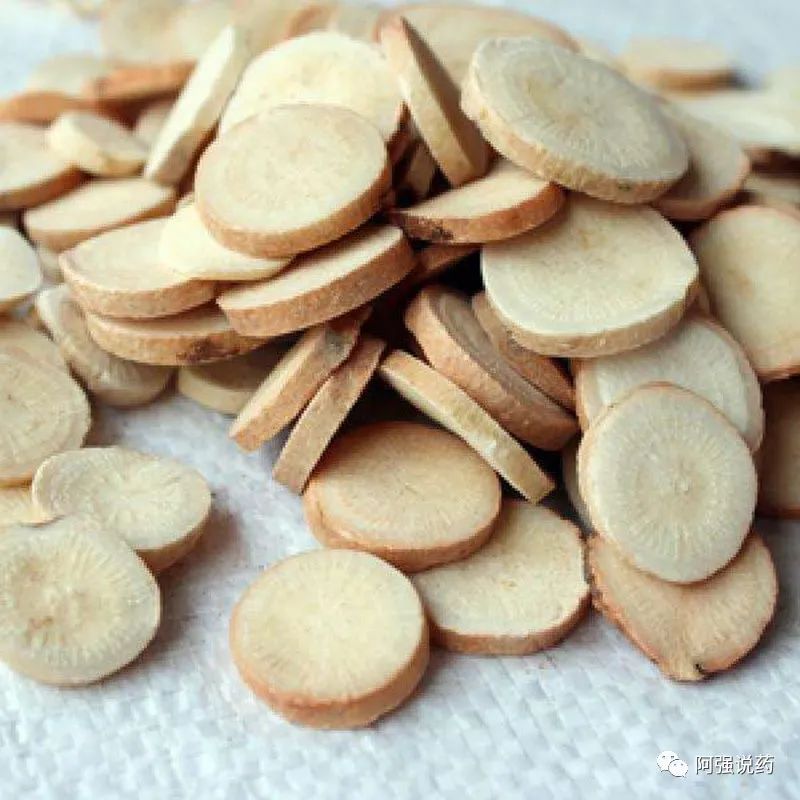
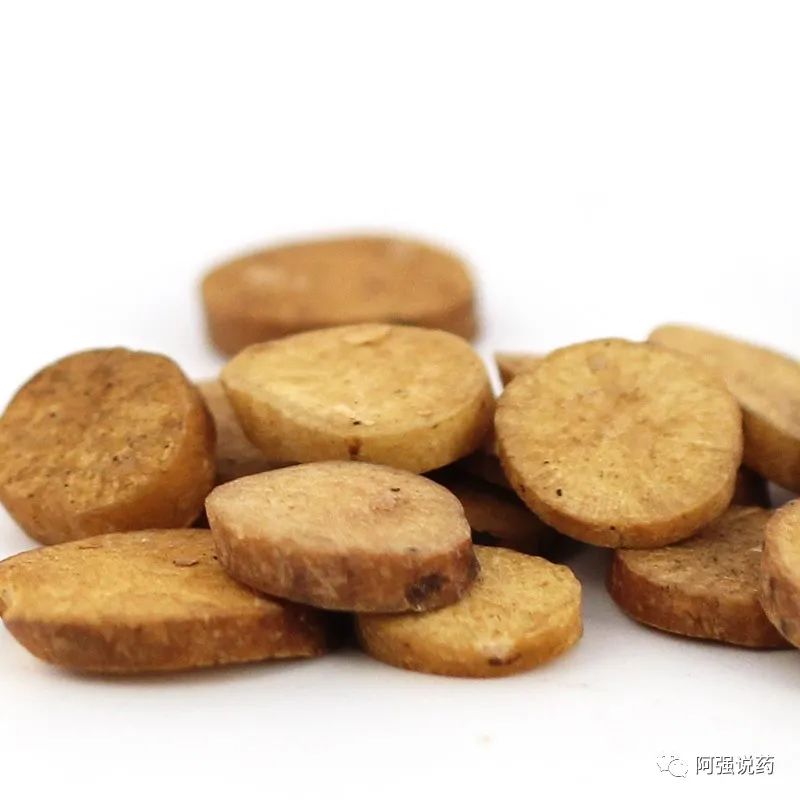
Differences in efficacy.
1. Raw Bai Shao is slightly cold in nature, with good effects in alleviating liver pain and astringing yin and stopping sweating.
2. Fried Bai Shao transforms the cold nature to warm, mainly used for nourishing blood, astringing yin, and warming the liver.
3. Fu Chao Bai Shao is more focused on strengthening the spleen, softening the liver, and enhancing pain relief.
4. Jiu Chao Bai Shao is used for harmonizing the middle and alleviating acute pain, often used for postpartum abdominal pain.
5. Cu Chao Bai Shao has good effects in regulating qi, relieving pain, and soothing the liver to relieve depression.
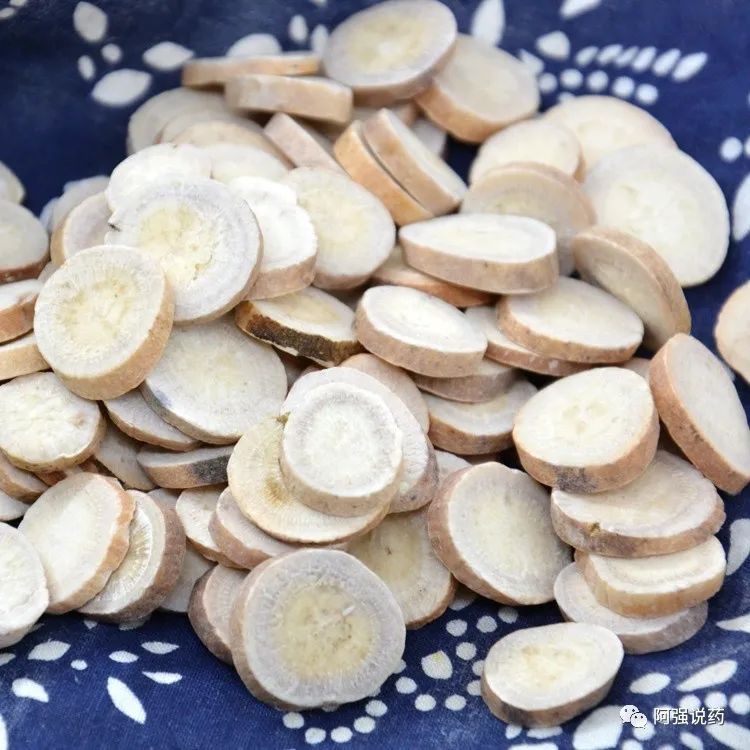
Components of Fried Bai Shao and Raw Bai Shao.
The content of paeoniflorin is higher in raw Bai Shao > Jiu Chao Bai Shao > Fu Chao Bai Shao.
The content of paeonolactone is higher in Fu Chao Bai Shao > Jiu Chao Bai Shao > Raw Bai Shao.
The content of benzoylpaeoniflorin is higher in Fu Chao Bai Shao > Jiu Chao Bai Shao > Raw Bai Shao.
In summary, after processing, the content of paeoniflorin in Bai Shao decreases, while the contents of paeonolactone and benzoylpaeoniflorin increase.

